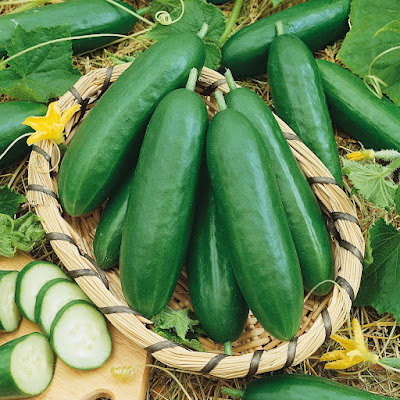1: Introduction:
Cucumbers are a refreshing addition to gardens and plates alike, celebrated for their crisp texture and hydrating properties. With various types available, each with unique characteristics, it’s essential to understand their distinctions to select the right variety for your culinary needs and garden space. This article will delve into the main types of cucumbers, highlighting their uses, flavors, and growth habits.
1. Slicing Cucumbers:
Slicing cucumbers are the most common type found in grocery stores and gardens. Typically longer, these cucumbers have a smooth skin and a refreshing taste, making them perfect for salads, sandwiches, and fresh eating.
Characteristics:
-Size:
Usually range from 6 to 12 inches in length.
- Skin:
Smooth and often dark green; some varieties may have lighter stripes.
- Flavor:
Mild and crisp, with fewer seeds compared to other types.
Popular Varieties:
- English Cucumber:
Known for its long, slender shape and thin skin, which doesn’t require peeling. It's often found wrapped in plastic to preserve its freshness.
- Burpless Cucumber:
This variety is seedless and has a sweet flavor, making it easier to digest for some people.
2. Pickling Cucumbers:
Pickling cucumbers are specifically cultivated for making pickles. These cucumbers are typically smaller and have a bumpy skin, which helps them absorb brine better during the pickling process.
Characteristics:
Size:
Usually 3 to 6 inches long.
Skin:
: Bumpy and thick; dark green skin.
- Flavor:
More intense and slightly bitter compared to slicing cucumbers, making them ideal for pickling.
Popular Varieties:
- Kirby Cucumbers:
A classic pickling variety, these cucumbers are known for their crunch and flavor, often used in dill pickles.
- Boston Pickling Cucumber:
Smaller and perfect for pickling, they have a sweet taste that holds up well in brine.
3. Seedless Cucumbers:
As the name suggests, seedless cucumbers are bred to have very few or no seeds, resulting in a more enjoyable eating experience for many. They are typically larger and often used in salads or as a healthy snack.
Characteristics:
- Size:
Similar to slicing cucumbers, generally around 6 to 12 inches long.
- Skin:
Smooth and often thinner than other types.
- Flavor:
Mild and refreshing, ideal for raw consumption.
Popular Varieties:
- **Hothouse Cucumbers**: Grown in greenhouses, these are typically seedless and have a delicate flavor. They are often found in supermarkets and are prized for their crispness.
4. Asian Cucumbers:
Asian cucumbers differ from traditional varieties in appearance and flavor. They are typically longer and have a distinct flavor profile, making them popular in Asian cuisine.
Characteristics:
- Size :
Can reach up to 12 inches or more in length.
- Skin:
Thin and often dark green or striped.
Flavor:
Slightly sweeter and less bitter than Western varieties, with a crisp texture.
Popular Varieties:
- Japanese Cucumbers:
Known for their thin skin and minimal seeds, these cucumbers are often used in salads and sushi.
- Korean Cucumbers:
Smaller and typically very crunchy, they are commonly used in Korean dishes and can be eaten raw or pickled.
5. Gherkin Cucumbers:
Gherkins are tiny cucumbers that are typically used for pickling. They are often harvested when they are small and immature, leading to a crunchy texture.
Characteristics:
- Size:
Usually less than 3 inches long.
- Skin:
Bumpy and dark green, making them ideal for pickling.
- Flavor:
Intense and tart, perfect for making sweet and sour pickles.
Popular Varieties:
- Cornichons:
A French variety of gherkin, often used in charcuterie and appetizers.
Growing Considerations:
Regardless of the type, cucumbers thrive in well-drained, nutrient-rich soil with plenty of sunlight. They are warm-season crops, best planted after the last frost. Regular watering is crucial, especially during flowering and fruiting stages, to ensure a good yield.
Conclusion:
With a variety of cucumbers available, from slicing and pickling to Asian and gherkin types, each offers distinct flavors and culinary uses. Understanding these types can enhance your gardening experience and culinary creations. Whether you’re growing cucumbers in your backyard or simply selecting them at the grocery store, knowing the differences will ensure you choose the best type for your needs. Enjoy the versatility and refreshment that cucumbers bring to your table!







.jpg)
.jpg)
.jpg)

0 Comments